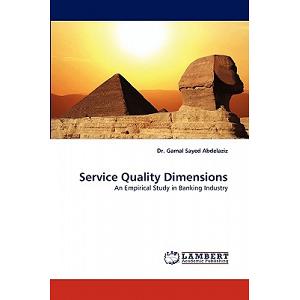- Reliability - Ability to perform the promised service dependably and accurately.
- Responsiveness - Willingness to help customers and provide prompt service.
- Assurance - Knowledge and courtesy of employees and their ability to convey trust and confidence.
- Empathy - The firm provides care and individualized attention to its customers.
1. Tangibles
- Physical Facilities: The cleanliness, layout, and overall condition of the service environment (e.g., offices, stores, or restaurants).
- Equipment: The quality and maintenance of tools and technology used to deliver the service.
- Personnel Appearance: The professionalism and grooming of staff members, which can influence customer perceptions.
- Communication Materials: The quality of brochures, websites, signage, and other marketing materials that convey information about the service.
2. Reliability
- Dependability: Providing services as promised without errors or failures.
- Accuracy: Ensuring that services are performed correctly and meet customer specifications.
3. Responsiveness
- Timeliness: How quickly a business responds to customer inquiries or issues.
- Helpfulness: The eagerness of employees to assist customers and resolve their problems.
4. Assurance
- Employee Competence: The expertise and training of staff members in delivering services.
- Trustworthiness: The ability of employees to convey reliability and safety in their interactions with customers.
5. Empathy
- Personalized Service: Tailoring services to meet individual customer needs.
- Understanding Customer Perspectives: Actively listening to customers and addressing their concerns with genuine care.
 |
| 🖼️ This image is available for licensing on Shutterstock. |
In today’s world, we often measure service through speed and appearance. But Islam teaches us that true quality is rooted deeper — in values, intention, and sincerity.
Just like this photo of sunlit green leaves — what we see above is the result of something we don’t see: the roots.
Allah says in the Qur’an:
"A good word is like a good tree, whose root is firmly fixed and its branches reach to the sky. It gives its fruit at all times, by the permission of its Lord."
(QS Ibrahim: 24–25)
🌱 This verse mirrors what modern business calls Service Quality Dimensions:
Tangibles: the beauty customers see (like the leaves).
Reliability: the consistent flow of service (like branches holding every leaf).
Responsiveness: the ability to respond to customer needs, like leaves turning to the sun.
Assurance: the confidence built when service is strong and steady.
Empathy: the interconnectedness — just like how each leaf grows in harmony with others.
Whether you serve as a business owner, a professional, or a community leader — never forget: Your service grows from your unseen roots. If your niyyah (intention) is pure and your foundation strong, your fruits will be lasting.
📸 Photo available on Shutterstock: Perfect for themes of spiritual growth, Islamic values in business, or metaphors of trust and sustainability.


No comments:
Post a Comment